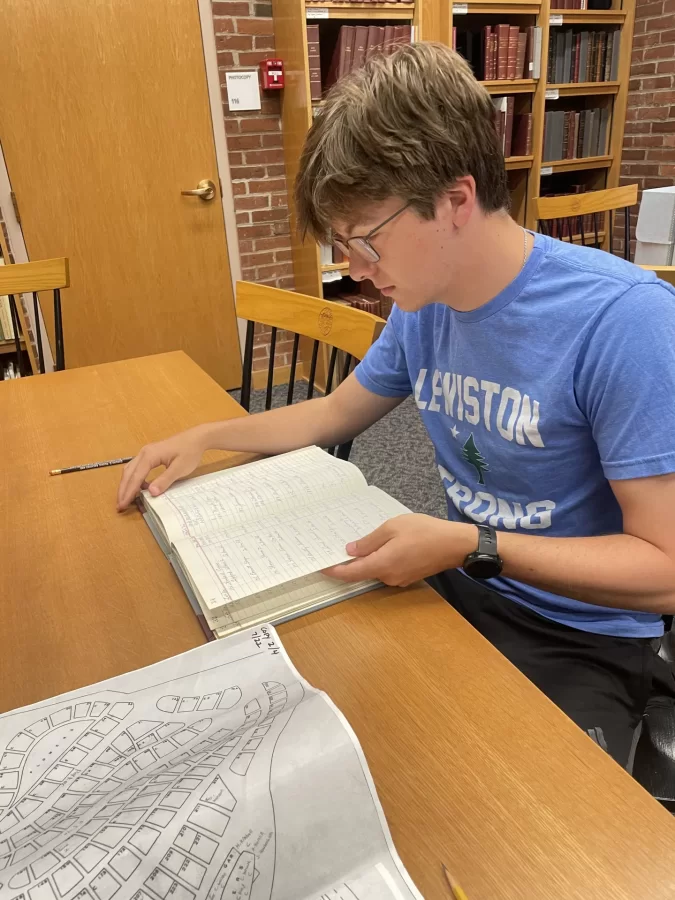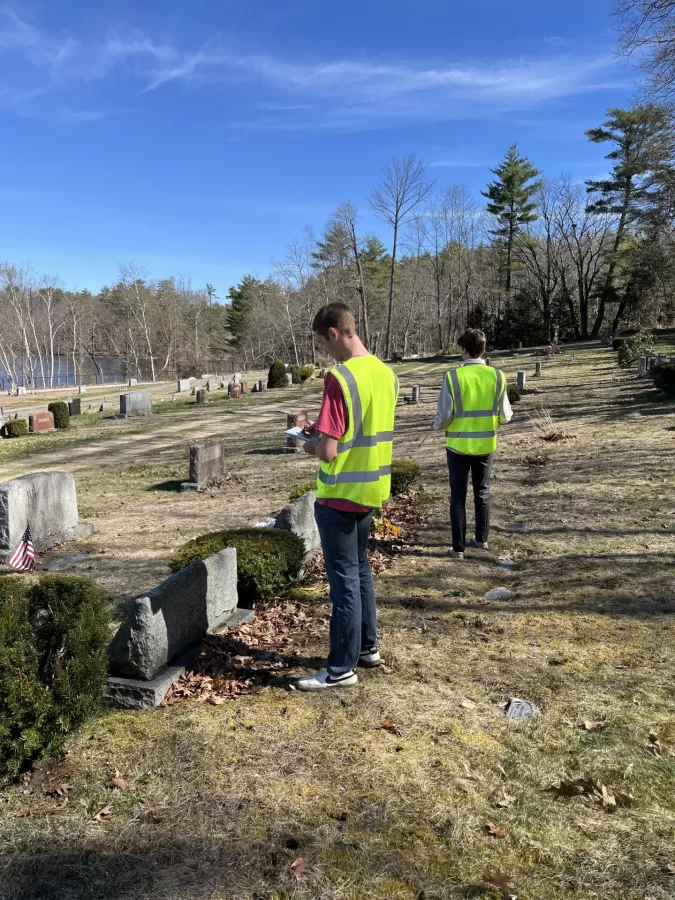Putting Veterans on the Map
Located on the banks of the Androscoggin River in Lewiston, Riverside Cemetery was incorporated in 1855 after a group of city leaders purchased land from the Maine State Seminary, soon to become Bates College. Many historically important people are buried at Riverside, including mayors, governors, and more than 1,200 veterans of wars dating back to the Revolutionary War.
Until recently, however, no one knew exactly where all those veterans were buried. Enter two Bates students – Nick Brown ’25 of Hopkinton, MA and Evan Skufca ’26 of Niskayuna, NY – who spent more than 100 hours during last May’s three and a half week Short Term creating a digital map of the graves.
Participants in the Harward Center’s Short Term Community Engagement Program, Nick and Evan began their work at Riverside Cemetery by meeting with Joan Macri, President of the cemetery’s Board of Trustees, to discuss how they would identify and map the graves of veterans. First, they surveyed a newer section of the cemetery, and then they moved to Muskie Archives to compile their findings into a spreadsheet.
Reflecting on Nick and Evan’s work on the project, Ms. Macri was impressed: “The two young men far exceeded our expectations. They developed a process for data gathering in the field; entered the data, along with a photo of each headstone, into an online database; and checked the data against the cemetery’s primary resources of historical maps, lot cards, and other historical records. They were able to finish the entire cemetery, which is a major step toward creating a comprehensive digital map of this historic cemetery.”
Despite this highly positive end result, Nick shared some of the challenges he and Evan encountered along the way: “This process involved cross-referencing our data with lot cards and a local Burial Book to ensure accuracy. Our initial method left some gray areas about the precise location of veterans, so we decided to repeat the process with a more precise approach.” Evan also noted, “Despite the rainy days, the beauty and history of the cemetery kept us motivated and engaged.”
One of the most significant challenges was mapping the cemetery’s oldest and most disorganized section. For that, Nick and Evan worked with Kevin Michaud, a Bates campus safety officer who shared valuable insights about the veterans buried in the cemetery. Nick and Evan expressed their appreciation for Kevin, saying that “[h]e helped us understand more about the veterans we were honoring, which added depth to our project.”
As they approached the final stages of their project, Nick and Evan worked to verify that the war each veteran served in was represented on the map. They also added additional American flags to unflagged graves and wrote a summary of their methodology for future volunteers.
Reflecting on their journey, Nick and Evan were proud of the progress they made and the skills they developed. This project taught them the importance of precision and thoroughness and deepened their connection to the community and its history. “This was an incredibly rewarding experience,” Evan shared. “We’re grateful for the opportunity to contribute to preserving the memories of those who served our country.”
Nick and Evan’s dedication and hard work produced a significant impact, honoring the memories of veterans and notable figures in the community. They created a resource that will benefit the local community and future historians by bridging historical data with contemporary technology. Their project embodies the spirit of Bates College’s commitment to public service and preserving history.
Read about another recent community-engaged project at Riverside Cemetery here.

